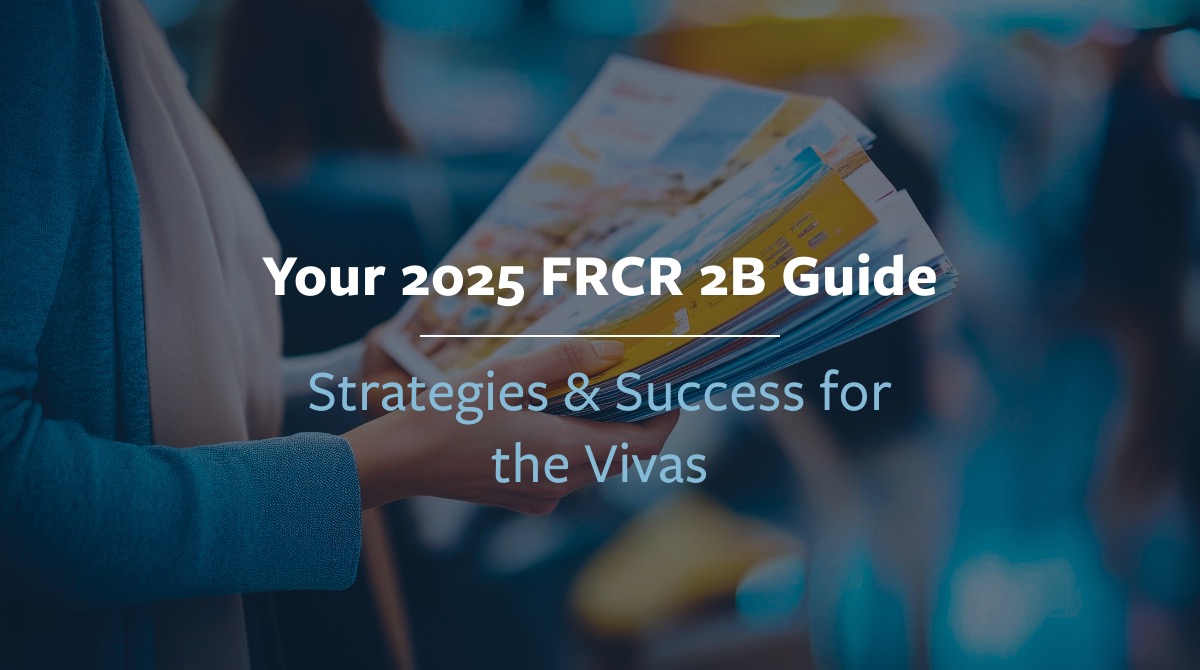
Your 2025 FRCR 2B Guide: Strategies & Success for the Vivas

Revise Radiology
May 20th, 2025
The FRCR 2B exam is changing—but the goal remains the same: to demonstrate that you're a safe, sensible, and structured radiologist. In this focused webinar, Dr Koshy Jacob from Revise Radiology explains how to approach the Viva component of the exam with confidence, especially in light of the format changes coming in June 2025.
🔄 What’s New in the FRCR 2B Viva?
While the viva format remains largely unchanged, its integration with the Short Case module (replacing Rapid Reporting) makes it even more important to hone your verbal communication and structured thinking.
The Viva Format:
Two 30-minute sessions
You’ll face two examiners per session
Expect a mix of modalities and systems
Goal: demonstrate clinical reasoning and safe practice—not perfection
💬 “You’re not being asked to be brilliant. You’re being asked to be safe and clear.” — Dr Koshy Jacob
🧠 What Do Examiners Look For?
Dr Jacob explains that examiners are essentially trying to answer two questions:
Can I trust this candidate with my patient’s scan?
Would they be a safe colleague to work with in real life?
To demonstrate this, your answers must:
Be structured and logical
Prioritise safety (e.g., highlight urgent findings or red flags)
Show that you can distinguish between common and serious conditions
🛠️ How to Practise for the Viva
The viva isn’t just about knowledge—it’s about delivery. That means your preparation must involve speaking aloud, preferably under timed conditions, and getting feedback.
Dr Koshy Jacob’s Top Practice Tips:
Use case-based discussion: get a colleague to show you a case and ask viva-style questions
Practise giving concise, focused answers under pressure
Record yourself and reflect on clarity, hesitations, and content
Focus on common patterns and cases likely to appear (e.g., lung masses, bowel obstruction, brain haemorrhage)
🗣️ Answering Like a Consultant
A common mistake is to ramble or "think out loud" without structure. Instead, Dr Jacob recommends using this formula:
Describe ➝ Interpret ➝ Diagnose ➝ Recommend
Example:
"There is a well-defined lesion in the right adrenal gland. It is low density and non-enhancing, likely an adrenal adenoma. No other abnormalities are noted. I would recommend correlation with biochemistry if clinically indicated."
This shows you’re methodical, aware of the clinical context, and know when to escalate.
⚠️ Common Pitfalls to Avoid
Dr Jacob highlighted several common errors candidates make in the viva:
Jumping to rare diagnoses: stick to common and serious possibilities
Ignoring red flags: always comment on urgent findings
Waffling: be clear, concise, and to the point
Panicking under pressure: preparation helps you stay composed
💡 “You’re not trying to sound clever. You’re trying to sound safe.”
📅 When Should You Start?
If your exam is in September, now is the ideal time to begin viva practice.
Dr Jacob recommends weekly viva sessions, increasing frequency closer to the exam.
Join a study group, use a timer, and take turns as examiner and candidate.
🔚 Final Takeaway
The FRCR 2B Viva is manageable—and passable—if you start early, practise aloud, and focus on structured, safe answers.
“Think like a consultant. Speak like a registrar. Be calm, clear, and kind to yourself during preparation.”
If you found this useful, keep an eye out for Dr Koshy Jacob’s follow-up webinars and consider exploring structured prep options at reviseradiology.com
